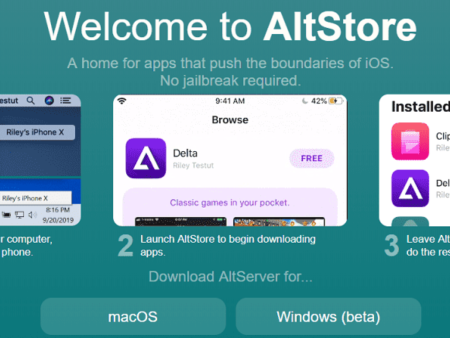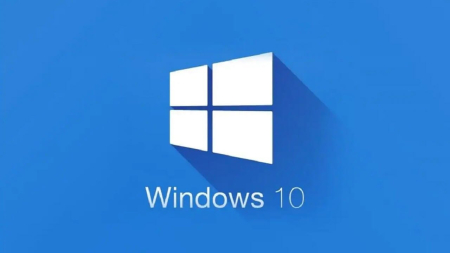Building Powerful Mobile Apps with React Native Development
-
06/05/2023
-
1168
-
0
In today's world, mobile applications have become an essential part of our daily lives. With the increasing demand for cross-platform apps, React Native has emerged as a powerful tool for building high-performance and user-friendly mobile applications. This comprehensive guide aims to provide a detailed overview of React Native development and equip you with the necessary skills and knowledge to build powerful mobile apps using this popular framework.
Related posts
The Essential Guide to App Store Optimization for iOS
1. Understanding React Native Development
React Native is an open-source mobile application framework created by Facebook that allows developers to build mobile applications using JavaScript and React. It enables developers to create applications running on iOS and Android platforms with a single codebase.
The core of React Native is based on React, a JavaScript library for building user interfaces. It uses a design concept similar to React, where developers write "components" to build user interfaces. These components are reusable and can be used across different application parts.
Some of the key benefits of using React Native for mobile development include:
Cross-platform development: React Native enables developers to write a single codebase; that can run on iOS and Android platforms, reducing development time and costs.
Reusability: Components can be easily reused across different application parts; reducing code duplication and making development more efficient.

Understanding React Native Development, Source: Asoservice.com
Native performance: React Native components are compiled into native code, which provides high performance and fast response times.
Faster development: With hot-reloading and an extensive library of pre-built components; developers can build applications more quickly and efficiently.
Popularity and community support: React Native has a large and active community of developers, which means plenty of resources and support are available for developers who use it.
Overall, React Native is a powerful and flexible tool for mobile development that can help developers build high-quality applications quickly and efficiently.
2. Setting Up Your React Native Environment
Setting up your React Native environment involves installing the necessary software and tools to develop, test, and deploy your app. Here are the basic steps to set up your React Native environment:
Install Node.js: Node.js is a JavaScript runtime that allows you to run JavaScript on your computer. You can download and install Node.js from the official website.
Install a code editor: You can use any code editor you like, but some popular options for React Native development include Visual Studio Code, Sublime Text, and Atom.
Install the React Native CLI: The React Native command-line interface (CLI) is used to create, build, and run React Native applications. You can install it by running the following command in your terminal:
Install Android Studio (for Android development): If you want to develop Android apps, you'll need to install Android Studio, which includes the Android SDK, emulator, and other tools needed for development. You can download and install it from the official website.
Install Xcode (for iOS development): If you want to develop iOS apps, you'll need to install Xcode, the integrated development environment (IDE) for iOS development. You can download and install it from the App Store on a Mac computer.
Once you have installed all the necessary software and tools, you can create a new React Native project by running the following command in your terminal:
This will create a new React Native project called "project" in your current directory. You can then run your project by navigating to the project directory and running the following commands:
These commands will start the development server and launch your app on the emulator or device.
Setting up your React Native environment requires some initial effort, but it will provide you with the necessary tools to develop your app and increase your app downloads.
3. Building User Interfaces with React Native Development
React Native is a robust framework for building mobile applications. One of the key strengths of React Native is its ability to create engaging and responsive user interfaces quickly and efficiently.
React Native uses a component-based architecture, each representing a portion of the user interface. This approach makes it easy to build complex interfaces by breaking them down into smaller, reusable pieces.
React Native provides a rich set of built-in components, such as View, Text, and Image, which can be easily styled using CSS-like style sheets. Additionally, many third-party libraries are available that provide additional components and functionality.
React Native also supports touch gestures, essential for building mobile applications. It provides several touchable components, such as TouchableOpacity and TouchableHighlight, which make it easy to create buttons and other interactive elements.
To create responsive layouts, React Native uses the Flexbox layout system. This system allows developers to easily specify how components should be arranged on the screen, adjusting to different screen sizes and orientations.
Overall, React Native provides powerful tools for building user interfaces for mobile applications. By leveraging its component-based architecture, built-in and third-party components, touchable components, Flexbox layout system, and animation API, developers can create visually appealing and responsive user app ratings quickly and efficiently.
4. Handling User Input and Navigation
Handling user input and navigation are essential components of any mobile app. In React Native, you can handle user input using components such as TextInput and Touchable and navigate between screens using a navigation library such as react-navigation.
Here are the basic steps to handle user input and navigation in React Native:
Handling User Input:
- Text Input: To handle user input from text fields, you can use the TextInput component. You can define a callback function to handle the text input by passing it as a prop to the TextInput component.
- Buttons: You can use the TouchableOpacity or TouchableHighlight component to handle user input from buttons. You can define a callback function to handle the button press by passing it as a prop to the TouchableOpacity or TouchableHighlight component.
- Navigate: To navigate between screens in React Native, you can use the react-navigation library. This library provides several navigation options, including stack, tab, drawer, and more. Here's an example of how to use the StackNavigator to navigate between two screens
In the code above, we created a StackNavigator with two screens: HomeScreen and DetailScreen. To navigate from HomeScreen to DetailScreen, you can use the navigation method provided by the navigation prop.
Overall, handling user input and navigation in React Native involves using components such as TextInput and TouchableOpacity and a navigation library such as react-navigation.
5. Accessing Device Capabilities and APIs
Accessing device capabilities and APIs is critical to building any mobile app; and React Native makes this process relatively easy. Here are some steps you can follow to access device capabilities and APIs in your React Native app:
Identify the API you need: Before accessing a device capability or API, you must identify which API you want to use. React Native provides access to many device capabilities, such as the camera, accelerometer, geolocation, and more. You can find a list of available APIs in the React Native documentation.
Install any necessary packages: Depending on the API you want to use, you may need to install additional packages. For example, if you want to use the camera API, you must install the react-native-camera package.
Import the API: Once you've installed any necessary packages, you can import the API into your React Native code. For example, to use the camera API, you can import it like this:
6. Testing and Deploying Your React Native Development
Testing and deploying a React Native app involves several steps. Here's a general overview of the process:
Testing your app: Before deploying it, you should thoroughly test it to ensure it functions as expected. React Native has a built-in testing framework called Jest, which you can use to write automated tests for your app. You can also use tools like Appium or Detox to test your app on real devices.
Building your app: Once you're confident it functions correctly; you must build it for deployment. React Native provides tools to build your app for both iOS and Android. For iOS, you'll need a Mac computer with Xcode installed. You'll need to install the Android SDK and configure your build environment for Android.
Preparing for deployment: Before you can deploy your app, you'll need to create an account with the app stores where you want to publish your app (e.g., Apple App Store, Google Play Store). You'll also need to prepare the necessary assets, such as app icons and screenshots. You can also read some macOS app reviews for more information.
Deploying your app: Once you've completed the above steps, you can deploy your app. The exact process will depend on the app store you're using, but in general, you'll need to create a release build of your app and upload it to the app store. You'll also need to provide metadata such as the app description, pricing information, and contact details.
Maintaining your app: Once it is life, you must maintain it. This includes fixing bugs, updating dependencies, and releasing new features. You can use tools like CodePush to deploy updates to your app without requiring users to download a new version from the app store.
Testing and deploying a React Native app can be a complex process; but with careful planning and attention to detail, you can ensure that your app is stable, functional, and prosperous.
Conclusion
In conclusion, React Native provides developers with a powerful and flexible framework for building high-quality mobile apps that can run on both iOS and Android devices. With its rich APIs, intuitive user interface components, and extensive developer community, React Native is an excellent choice for building robust and engaging mobile applications that can reach a broad audience. By following best practices and keeping up with the latest developments, developers can create compelling apps with React Native.
Related posts
https://asoservice.com/app-installs-downloads
https://asoservice.com/top-app-keyword-ranking
Thanks so much for reading this article.
Source: App Store Optimization services




































Leave a Reply
Your e-mail address will not be published. Required fields are marked *